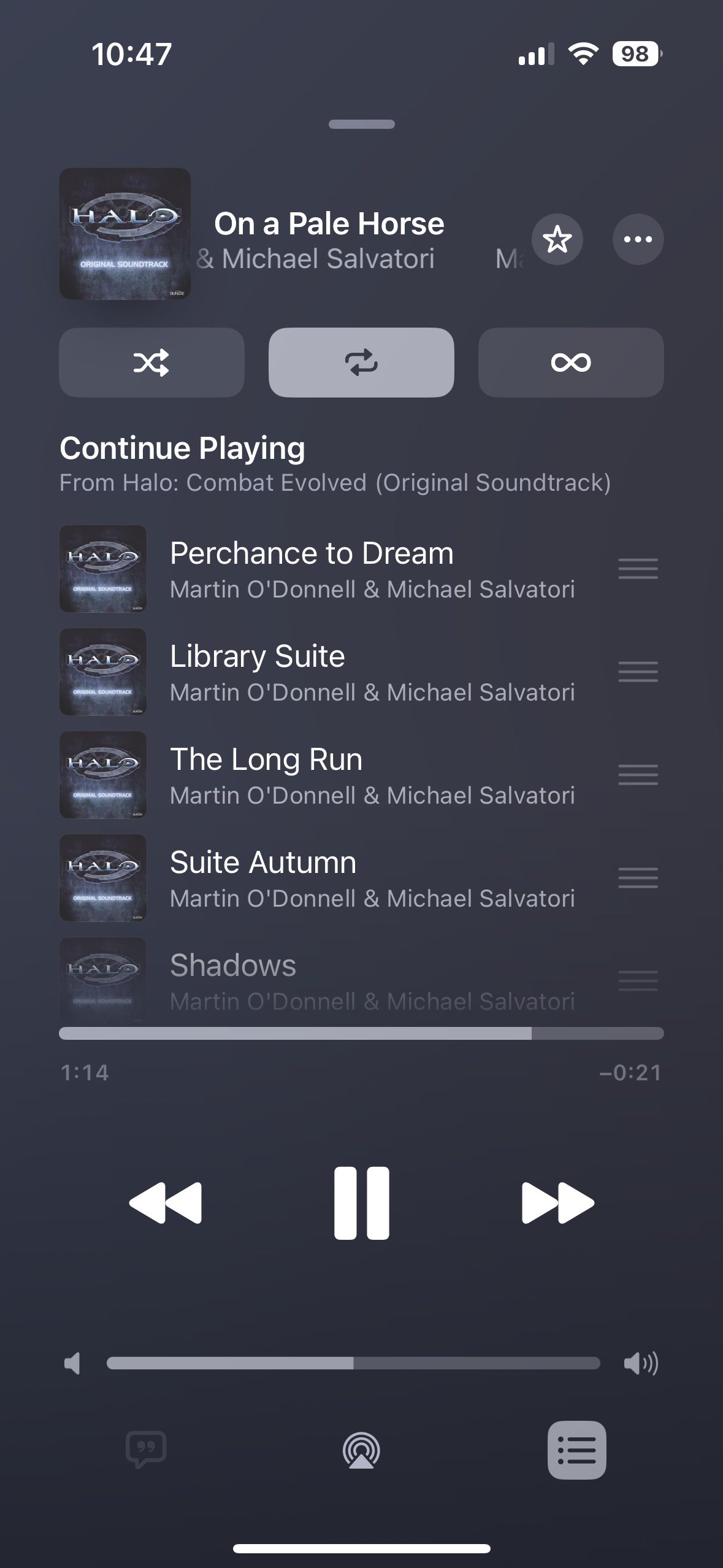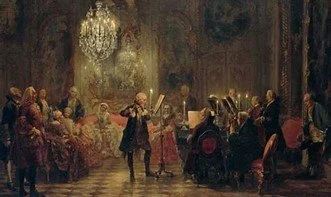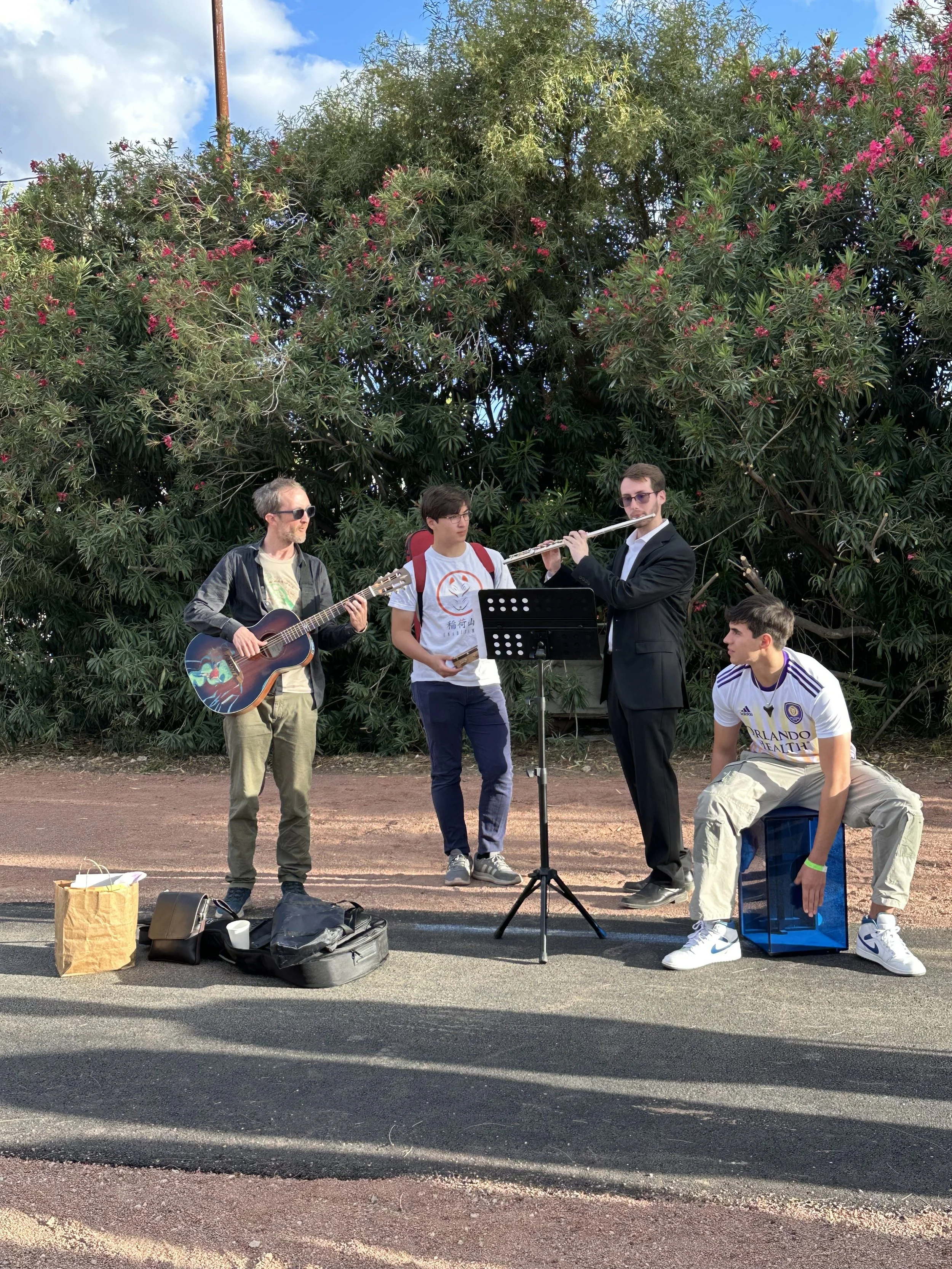Bach MIDI Wrap Up - Final Update
Well, we’re finally here! This is the conclusion of this semester-long journey: learning and creating a project to show off to all of you. Let’s jump into summaries of the two projects I began. If you’re only interested in the final product, scroll down to the final section.
The first project, or the original, was an attempt at arranging a medley of Halo music for flute choir through transcribing. That was the hardest thing I’ve ever done without experience, and I realized I could not make enough progress in the semester to create a project I wanted to share.
However, the second project was much more feasible and fun on my end. This involved taking an excerpt to work on, putting the score into Finale, and recording myself over the MIDI. For the excerpt, I picked Bach’s Badinerie from his Orchestral Suite No. 2 in B Minor. It was very coincidental that I would end up having a performance of this excerpt for the German department’s Springfest. Now, let’s go through the entire process, week by week. This will be a longer post, so we’ll start now.
During week 1, I started the Halo project I brainstormed earlier in the semester. There were three important tasks this week. First, I downloaded and played “Halo: The Master Chief Collection” on my Steam Deck to do some kind of research and bring out the emotions that made me fall in love with the game in the first place. Next, I listened to the entire “Combat Evolved” soundtrack. The transcription arrangement being a medley meant I needed to find a few tracks to combine. I ended up picking the main theme, On a Pale Horse, and three others. In the end, these choices made me struggle, but we’ll get there. This week finished with starting the arrangement, which was in the unique key of E Dorian, which I did like.
Halo: Combat Evolved album tracks on Apple Music
Perhaps the week with the least happening was week 2. The main highlight was finishing the first section of the Halo MIDI up until the built chord with a fermata. Other than that, not much happened.
Finale software at the end of week two
Dynamics and thoughts of extended technique were the talking points of week 3. The first new update of the week was discussing how to incorporate extended techniques. In this case, I used Ch K Ch as a percussive snare effect, and it included an audio file of said technique. There was a brief mention of how the knowledge of the abilities of the ensemble you are writing for is an important piece of information. To have it performed, people need to be willing to say they can and want to play the piece. Finishing this week was dynamic. Some dynamic markings are given when writing for flute choirs, and I mentioned one of them being that the bass flute never has a written piano because it would not be heard over all other flutes combined.
Week 4 was possibly the most important week of the entire project. From this update forward, I was no longer working on the Halo arrangement but rather the Bach MIDI file. This decision to switch came from the two weeks between updates on spring break. I tried many times during that time to continue working on the project, but no progress was made. Now, progress has not only been made with the new project, but it is to the point of being finished.
Start of Badinerie half of project
The second-most progress made on this project was made during week 5. This week included working on the MIDI to the halfway point and practicing the Badinerie excerpt. I began discussing ornamentation here but saved most of it for a further week (week 7). The other talking point was the hierarchy of notation within Finale. What is needed to create effective MIDI? There are three things that I will list: correct notes, ties, and dynamics. If you are looking for more information about that, check week 5’s post.
Baroque ensemble
Practice and finishing the MIDI were top priorities for the sixth week. I sat down with Finale open in front of me and knocked out the rest of the MIDI. There was one way I practiced Badinerie: with a metronome and kept increasing it. This allowed for, yes, getting the piece in my fingers, but it also allowed for varying the ornamentation within the tempo, which is probably the most important rule of Baroque ornamentation and music as a whole.
Baroque flute
Not a whole lot happened in week seven. I briefly went over ornamentation a little more than week five, and then linked a video about baroque ornamentation. This was the week I also began learning GarageBand. The program seemed so complex, but after messing around with it for an afternoon, it makes a lot more sense.
GarageBand
Now comes the new stuff. Week 8 was the conclusion of this project. However, not just the MIDI project for Badinerie was finished. I also performed at the German department’s Springfest. It was coincidental that my work on Badinerie was carried out between the two. The performance was unique in the sense that the setting was not super formal, and the instrumentation was also a strange combination. It ended up working out well and sounding good based on what I heard from the audience.
Working with GarageBand on the MIDI might have been even more fun, in my opinion. After learning how to import the file in GarageBand, I did some searching and found out how to mute tracks and record with the line. Before recording, I had to change the instruments from piano to strings and harpsichord. There was, unfortunately, no harpsichord sound on GarageBand, so I used pizzicato strings. In the end, it came out quite nicely.
Performance at Springfest
Based on everything that happened this semester, my feelings about this project/set of projects have changed throughout my work. I started motivated and excited, but slowly became unhappy with my work. That dissatisfaction went away and turned into motivation again after switching to a project that I would have a better time creating. Concluding the Bach MIDI was exhilarating. Being able to perform and showcase the outcome of this project is not something that would have happened with the Halo project. Check out the video below for the final product!
When obstacles were encountered, my method was to just try and power through them. That was a mistake, which ended up setting me back by what felt like weeks. It was only after I changed projects to something that was more focused on the career specialization, I wanted that I made substantial progress.
How was the Bach MIDI focused on my future career path in a way that would benefit me? Because I want to be an orchestral flutist, I have to audition for positions. Those auditions require an in-and-out knowledge of each excerpt/piece. Creating the MIDI made me familiar with the parts that go on around me, while playing with it prepared me to practice and perform it in exactly the way I want it, if I did have a real orchestra with me.
Now that this is all over, what’s next? I will be working towards my junior recital, using YouTube accompaniment to practice on my own time. I hope you all will tune in to the stream and hopefully see you later!







